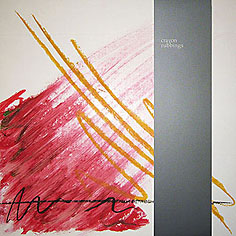

Before anyone heard of a Tori Amos, Sarah McLachlan, or Evanescence, there was a band in Champaign Illinois operating under a now familiar paradigm of a woman at a piano belting out eclectic rock songs fraught with emotion and laden with personal symbolism. This was in 1983, when the charts were ruled by The Police, Michael Jackson, Duran Duran, and the likes of Culture Club, Kajagoogoo, and The Human League. While female performers were occasionally breaking through on the pop charts (Annie Lennox, Chrissie Hynde, and Donna Summer, all worthy performers), the closest thing to "alternative" at the time was what might be found on college radio or other more obscure stations in larger cities, but the voices of women on these charts were few and far between: Berlin ("Sex"), Nena ("99 Luftballoons"), Siouxsie and the Banshees ("Dear Prudence") etc.
This post-electro-pop era of American new wave was high on artifice and fake British accents while low on authenticity. Media channels were clogged with me-too bands coasting on the trend of the day, while MTV was in its infancy, ready to impose an even more homogeneous blanket over the music world. In contrast to the shallow state of popular music, the American punk rock scene was thriving underground with the likes of Bad Religion, Dead Kennedys, Circle Jerks, and Minor Threat. The punk scene was the opposite pole to the straight entertainment business, and independent distribution channels rose to meet the demand for this underground explosion. But just as popular music tended to align artists into the same sound, the underground scene was siloed into this radical hard core punk movement.
Between these two extreme trends in the music world lay a no-man's land of "everything else", where folk, progressive, and even metal languished. In Champaign, the scene was dominated by electro-pop/new wave wannabes, since most of the few local venues at the time tended to insist on "electro-pop" or nothing, despite it already falling behind the next global trend. Exceptions were Mabel's, with a history of featuring the best professional touring groups and the biggest/best of what was going on locally, along with "alternative" venues like the Moonlighter, Channing-Murray (plus the Red Herring downstairs), and Nature's Table (though the latter was primarily jazz oriented).
Enter Crayon Rubbings, a band dedicated to sincere artistry, mixing influences across all genres from the diverse music backgrounds of its members, and featuring unapologetically demanding song forms, lyrics, and delivery from singer-songwriter Laurel Garber. The closest comparison that could be made at the time was to Kate Bush, but Crayon Rubbings worked as a band, and combined rawness from punk with folk, progressive, and hard rock for an edgier sound. Yet the comparison was fair when the band chose to work up studio-based material that at times invoked pastoral scenes or made references to childhood, personal history, and family -- the sort of imagery that is part of a more feminine worldview and which only started to break through into the popular music environment in the nineties, by which time Crayon Rubbings, as a band, had already moved on.
This site is the archive of a unique band that was indeed ahead of its time. 2008 marked the 25th anniversary of the group's first release, which is being collected with the rest of the band's released material on a forthcoming CD collection. The band's 80s releases do not fully encompass the experimentation and innovation of their efforts as a group, limited as they were by the constraints of music distribution available at the time, so this site also presents unreleased recordings from studio sessions, sketches, and live shows. We hope you the listener/viewer will find plenty of interest.
Releases now available on Bandcamp »
© 2008-09 HereThere-EveryWare | Last update: 12/12/2020
